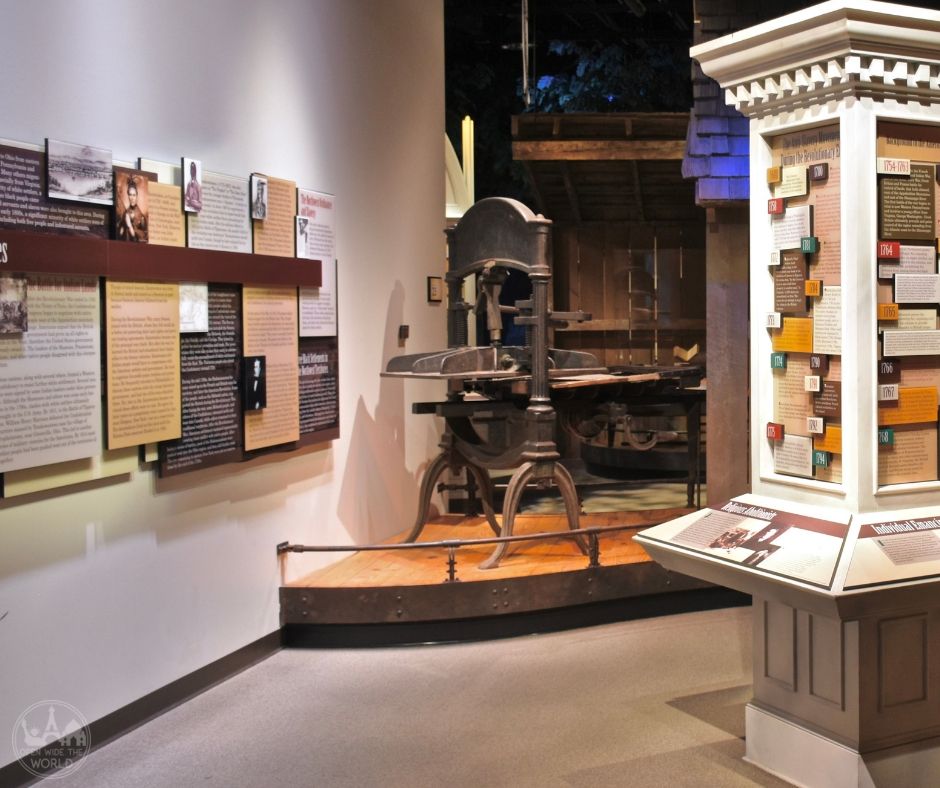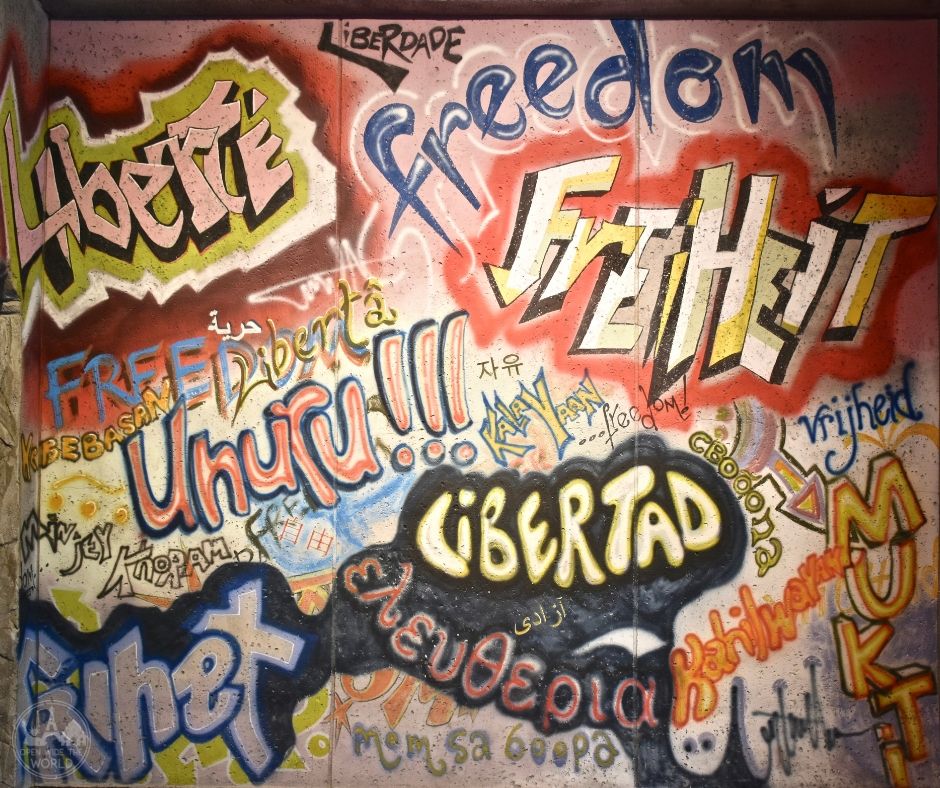A Guide to the National Underground Railroad Freedom Center
The National Underground Railroad Freedom Center in Cincinnati, Ohio is one of the nation's premier museums for learning about the history of slavery on the North American continent. Check out our guide to this amazing Underground Railroad museum. #undergroundrailroad #blackhistory #openwidetheworld
Aptly sitting just yards from the banks of the Ohio River in Cincinnati, the National Underground Railroad Freedom Center is located on the first free soil many enslaved people would have encountered in their daring escapes from slavery in the American South.
While the location of this incredible Underground Railroad museum is intriguingly appropriate, its name is somewhat less fitting. Despite having "Underground Railroad" in its title, only a fraction of the museum is actually devoted to the Underground Railroad; the majority of exhibits impart a comprehensive overview of slavery on the North American continent.
Therefore, for the purpose of providing the best guide to the National Underground Railroad Freedom Center, we will address the two aspects of the museum -slavery and freedom- separately.
Slavery
Exhibit: “From Slavery to Freedom”
Anyone who has ever wanted to gain a strong understanding of the economics, politics and logistics of slavery in the New World will completely love this exhibit.
“From Slavery to Freedom” explores 300+ years of slavery in the Americas, primarily via written information, with various artifacts sprinkled throughout the exhibit.
Note:
This exhibit requires extreme amounts of reading.
Most of the information, while very insightful, is presented via placards and timelines that must be read.
Fortunately, the placards and timelines are presented in visually appealing form, as seen above. Nonetheless, it can seem nearly impossible to take in and process 300+ years of history simply by reading an exhibit for three hours (which is the amount of time we estimate it would take for an adult to read this entire exhibit).
Tip:
Don’t push yourself to read everything. Take in what you can, and plan for a return visit to deepen your understanding at another time.
Exhibit: “The Slave Pen”
Not far from the museum, a wooden structure was found on a farm and identified as having been a “slave pen” from the 1820s through the 1850s. (A slave pen was any structure where enslaved people would have been held before being transported and/or sold.)
Preservationists removed the slave pen from its farm location and restored and rebuilt it right inside the museum. Visitors can read about the restoration process and even go inside the pen.
Note:
The structure is so well restored and comfortable looking, as compared to structures of its era, that its dark history isn’t immediately obvious.
Tip:
Take a moment of reflection to fully process what the walls would have meant to those held inside just a few generations ago.
Exhibit: “Invisible: Slavery Today”
This exhibit presents the shocking statistics on slavery in the modern world.
The exhibit also shares stories from former slaves who have now been rescued from their circumstances, as well as eye-opening “at risk” factors, and finally, offers several ways we can help.
Note:
This exhibit does get into some explicit details of the modern slave industry.
Tip:
Consider having an adult in your party pre-view this exhibit before deciding on its appropriateness for any children under 16 in your group. We advise special caution for younger children and emotionally sensitive children and adults.
(On laptop, see next column, at right, for our guide to the “freedom” aspects of the National Underground Railroad Freedom Center.)
Freedom
Exhibit: “Escape! Freedom Seekers and the Underground Railroad”
The absolute highlight of a visit to the National Underground Railroad Freedom Center -particularly because it is the namesake for the entire museum!-, this exhibit uses storytelling, role-playing, and hands-on activities to teach about resistance to slavery in the decades leading up to the U.S. Civil War.
Visitors begin with “Midnight Decision,” a short video introducing a family of slaves, the four of whom are at completely different places on their journeys to freedom. (The video only shows three people, but don’t miss the poignant storyline of the absent father.)
Progressing through the exhibit, visitors engage with an interactive kiosk, making choices as to how to proceed in an escape.
As the exhibit reaches its end, visitors view an epilogue that shares the family members’ stories years later.
Supplementing the interactive elements, there are plenty of placards offering additional information on the operations and key players in the Underground Railroad.
Note:
While this exhibit offers plenty of written information for those who learn best by reading, it does require significantly less reading than the “From Slavery to Freedom” exhibit. Children will find this exhibit more interactive and engaging.
Tip:
Consider beginning your visit with this exhibit if your group is short on time or attention.
Movie: “Brothers of the Borderland”
In this 25-minute video, viewers follow abolitionists John Parker and Rev. John Rankin as they aid a freedom seeker fleeing slavery.
Note:
This movie, a highlight of the museum, is currently unavailable, with no known return date.
Tip:
Museum admission is not pro-rated in the absence of this movie.
VR: “The Rosa Parks Experience”
In a brief, 3-minute virtual reality activity, visitors have the opportunity to be 1950s Civil Rights activist Rosa Parks. VR technology allows visitors to step onto the bus, sit down, and resolve not to move, then experience history in the making.
Note:
This activity comes as a $5 add-on to the base ticket price. We recommend the investment.
Tip:
Ensure children’s equipment is working before beginning your own experience.
Lab: “Open Your Mind: Understanding Implicit Bias”
In this lab-type exhibit, a computer test and several interactive elements afford visitors a look into their own unconscious biases.
Note:
The activities in this lab will generate possible interpretations of bias that have a basis in research.
Tip:
Chat with learning lab specialist Ryan Wynett if you’re lucky enough to catch him there.
Side note: Want to visit an actual home on the Underground Railroad? Check out one of the best: the Levi & Catharine Coffin House near Richmond, Indiana.
Your Visit
Hours
Sunday - Monday, 12pm - 5pm
Closed Mondays, October thru February
Tuesday - Saturday, 10am - 5pm
Admission
Adult $15
Child $10.50
Senior $13
AAA discount
Contact
50 E. Freedom Way, Cincinnati, OH 45202
513-333-7500
While you’re in Cincinnati, don’t miss Sage, the Everyday Wanderer’s Self-Guided Walking Tour of 20+ Cincinnati Murals!
Have you been to the National Underground Railroad Freedom Center?
Do you have other great Underground Railroad sites to recommend?
Tell us about it in the comments!
Looking for more Underground Railroad destinations to visit? Check out our Underground Railroad page!
And to continue going deeper into the country’s often overlooked history, check out:
Pin this post for your visit!
We participate in Amazon's affiliate program, which allows sites to earn advertising fees. There is no additional cost to readers making Amazon purchases through our site.









